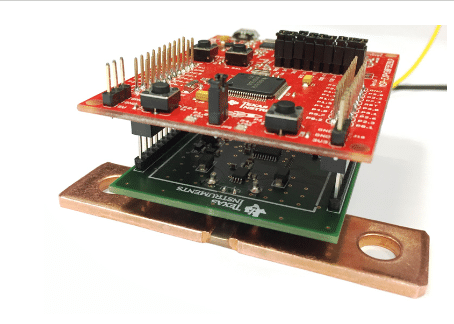The LM741 IC is a
general-purpose operational amplifier (op-amp) that can be used in a
variety of applications, including audio amplification. It is a
single-channel device that can amplify signals up to a maximum of
200,000 times (200,000x). The LM741 IC is commonly used in audio pre-amplifier, active filters, and other signal processing circuits.
The
LM386 IC is a low-power audio amplifier that can be used to amplify
signals with a low voltage supply. It is a single-channel device that
can provide up to 800mW of output power. The LM386 IC is commonly used
in portable audio devices, such as radios and portable speakers.
In this blog post it is shown how one can build an efficient and power audio amplifier with LM741 and LM386 integrated circuits.
To
build an audio amplifier circuit using the LM741 and LM386 ICs, you
will need a few additional components. These include resistors,
capacitors, and diodes. The specific components you will need will
depend on the desired circuit configuration and the specific application
of the circuit. One example of constructing audio amplifier circuit with these two integrated circuit is shown below.
The input can be audio signal from cell phone, ipod,PC or microphone. To assemble the circuit, you will first need to
connect the LM741 IC to the LM386 IC. This is typically done by
connecting the output of the LM741 IC to the input of the LM386 IC.
Next, you will need to connect the resistors and capacitors to the appropriate pins on the ICs as shown in the above diagram.
In the above circuit diagram, the LM741 op-amp IC is used as inverting audio pre-amplifier. An audio pre-amplifier amplifiers small signal to a higher level before further processing. Instead of the LM741 op-amp one can also use the LM358 op-amp as illustrated in lm358n audio amplifier circuit tutorial. The power supply used in the above audio amplifier is 5V. The LM741 pre-amplifier in the above circuit diagram is biased at the non-inverting input using the resistors R2 and R3 so that the output signal swing with 2.5V. The 100kOhm potentiometer and 10kOhm resistor R5 sets the gain of the inverting pre-amplifier. The resistor R4 at the output of the op-amp is used to create a DC path for the output current in order increase the bias current in the output stage transistor inside the LM741 op-amp.
In between the pre-amplifier circuit and the power amplifier circuit we have used a coupling capacitor C2 of 1uF, 1 10kOhm potentiometer to control volume and pair of 1N4148 diodes to clamp the input to the pin 3 of the LM386 power amplifier to +0.7V and -0.7V IC in order to protect the LM386 integrated circuit.
In the above circuit diagram, the LM386 IC is used as audio power amplifier. The components values used connecting the LM386 IC are standard value which can be obtained from the IC datasheet. The resistor Rx is used to set the gain of the audio amplifier. The following is table for value of gain resistor value.
Once the circuit
is assembled, you can test it by connecting an audio source, such as a
music player or microphone, to the input of the circuit. The amplified
audio signal should then be output from the circuit.
It’s
important to note that this is a basic example and different variations
can be used in different scenarios and applications. Also, it’s highly
recommended to consult the datasheets of the ICs and make sure to follow
proper safety measures when building electronic circuits.
Overall,
the LM741 and LM386 ICs can be used together to create a powerful and
efficient audio amplifier circuit. With the right components and proper
assembly, you can create a circuit that can amplify audio signals to a
desired level.







